Side by Side
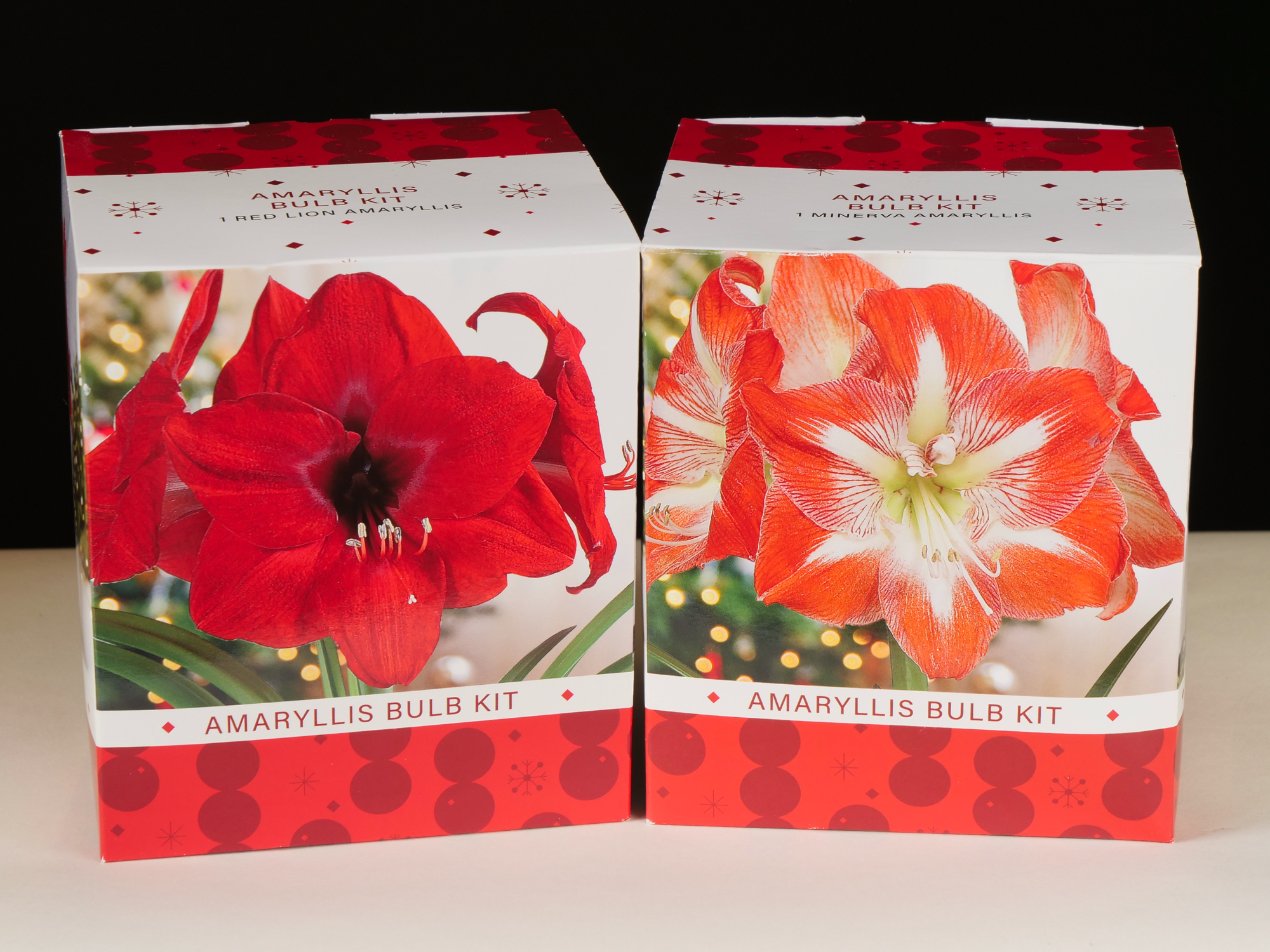
Planning isn’t a strong suit here at Emaryllis HQ. Since every year brings changes, it seems best to roll with the punches…and this season’s punches have already been discussed. The two box kits from De Ree were already bestowed the title “Sibling Rivalry”, but that title would have probably worked even better for this entry based on a run to a big box hardware store for some garden tools, that somehow magically managed to see two box kits loaded into the cart as well. 😉
The two kits are different only in the cultivar in each carton. The white selection turned out to be the option of paperwhite narcissus (boo!? do we need to take a stand on these vs. amaryllises?). There was no pink choice at all or we might be testing at least three of these at only $8 each. They could have probably been gotten even cheaper if we had caught them on special (or planned further ahead to await a sale). So here our our fraternal twin kits, featuring two of the all-time favorites, ‘Red Lion’ and ‘Minerva’.
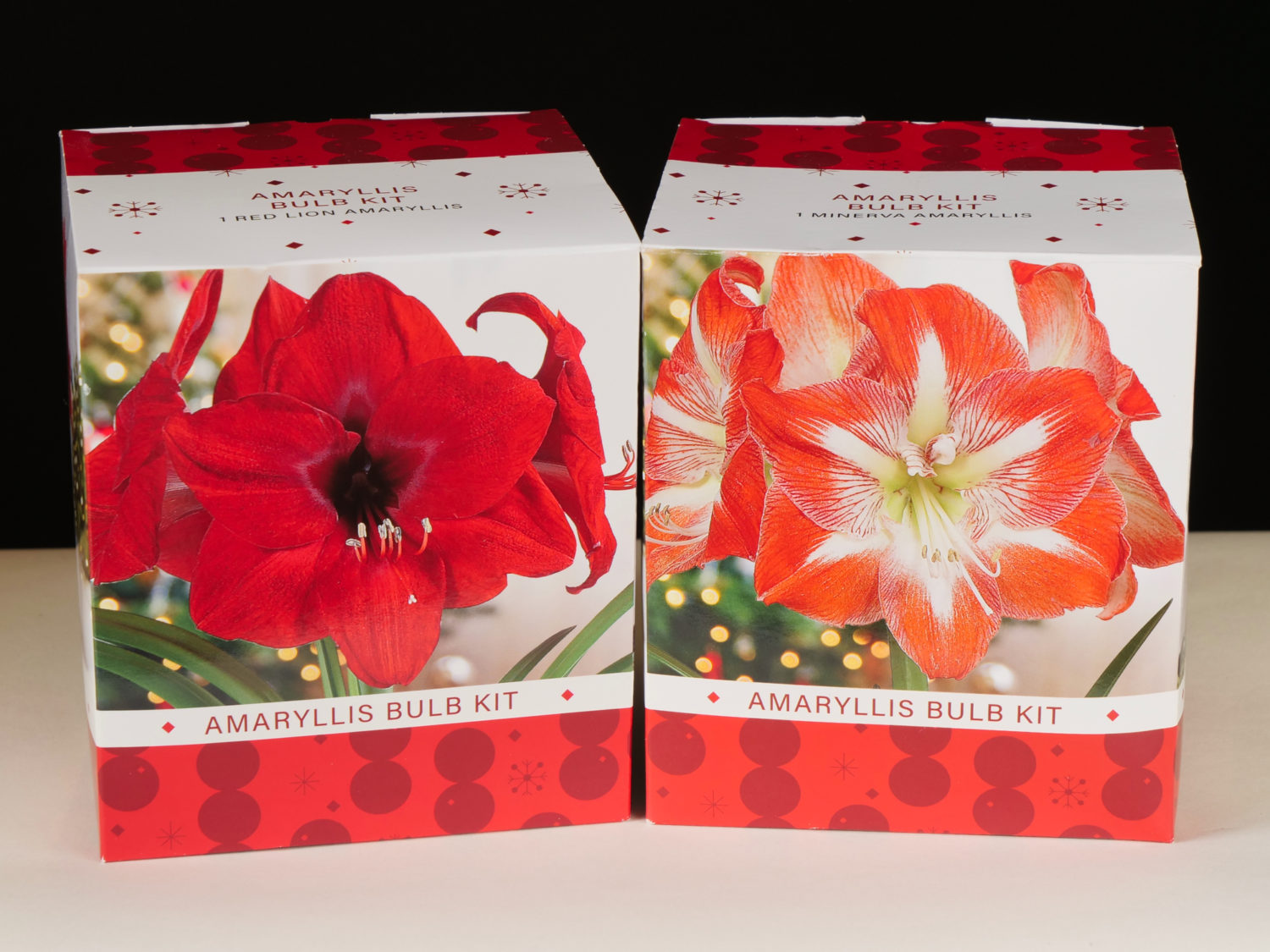
The basic kits often found for under $10 are often lacking in some aesthetic niceties, and use small bulbs with no claim size noted. Yet they can manage a real value in terms of performance…sometimes. Let’s see how these inexpensive Home Depot sourced kits stack up (or side by side).
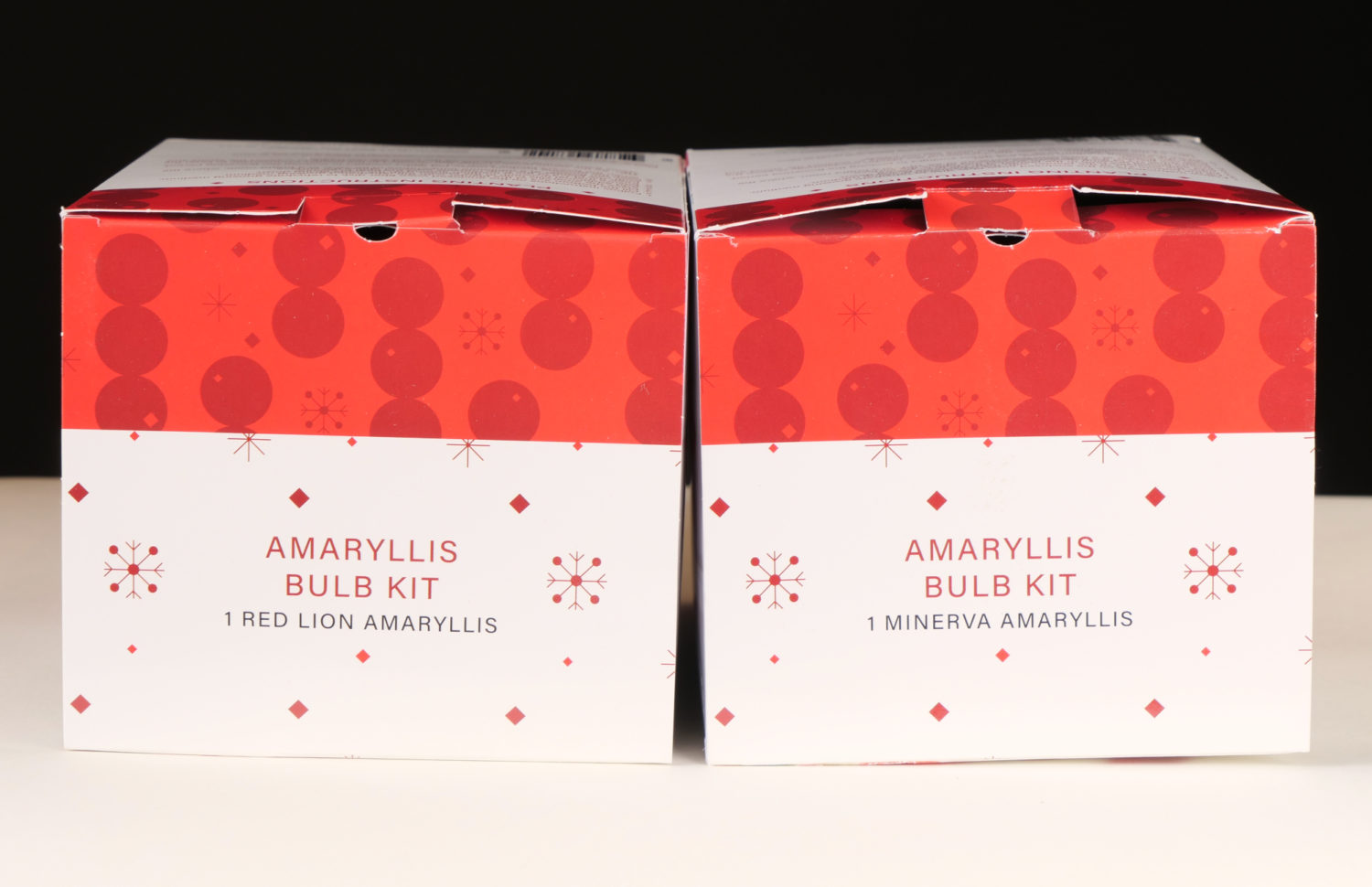
Pawing through quite a few boxes on display, it was noted that just about all had some degree of bulging cartons, and it was impossible to find a ‘Minerva’ that wasn’t, or I would have chosen it over the one here. This was the state of what was for sale on the 19th of November, nearly a week before Thanksgiving and several weeks before Christmas. Considering that the packaging uses a Christmas holiday motif, is it being sold as a holiday gift option?
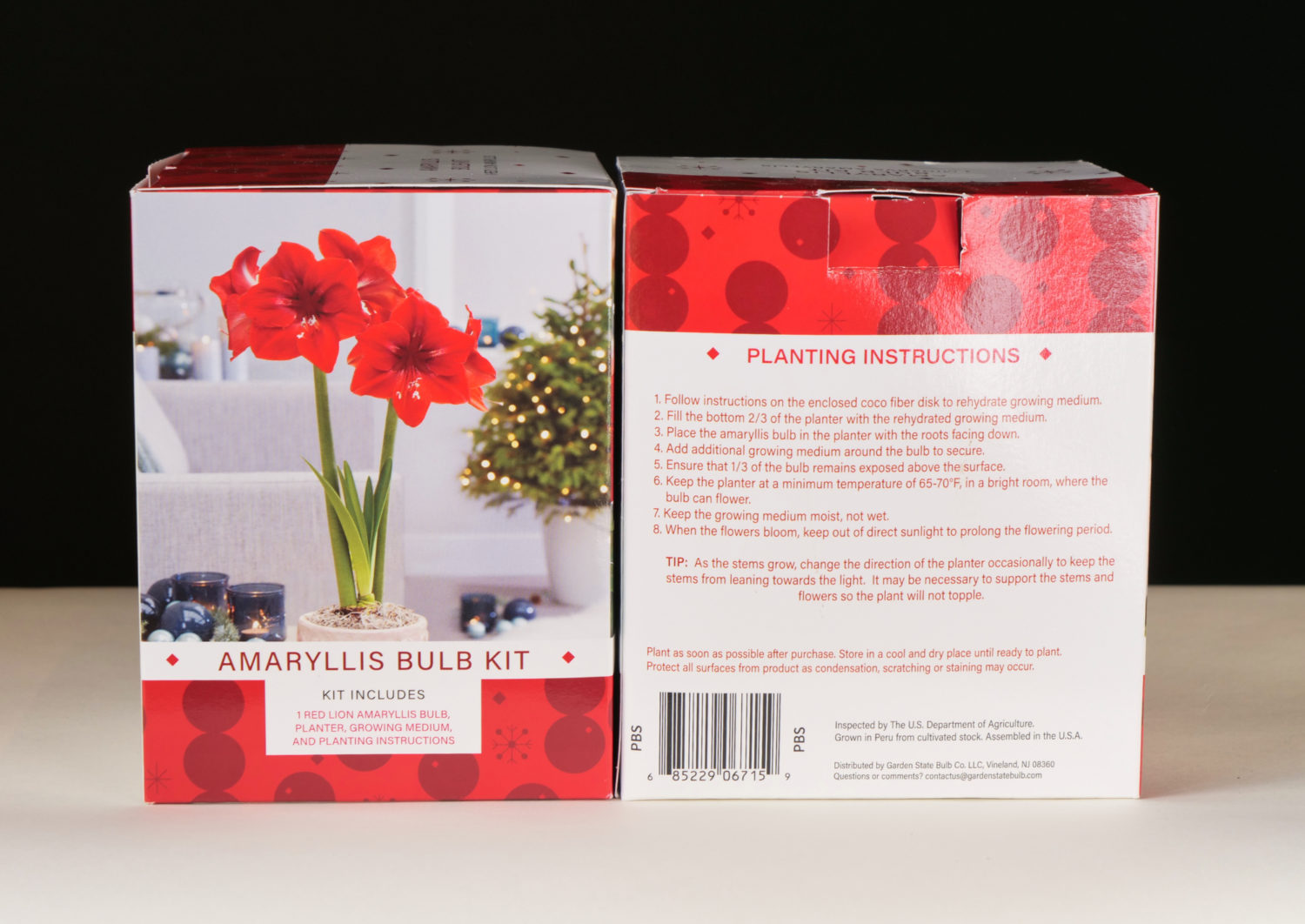
As seen in our first kit entry this season, seeing Peru as the country of origin should tip us off to open the box immediately (or heck, while you’re in the store if you are bold!). Depending on the holding temperatures that the boxes have been kept in, it is highly likely they are pushing scapes or leaves already. If extreme, it can be very detrimental to performance.
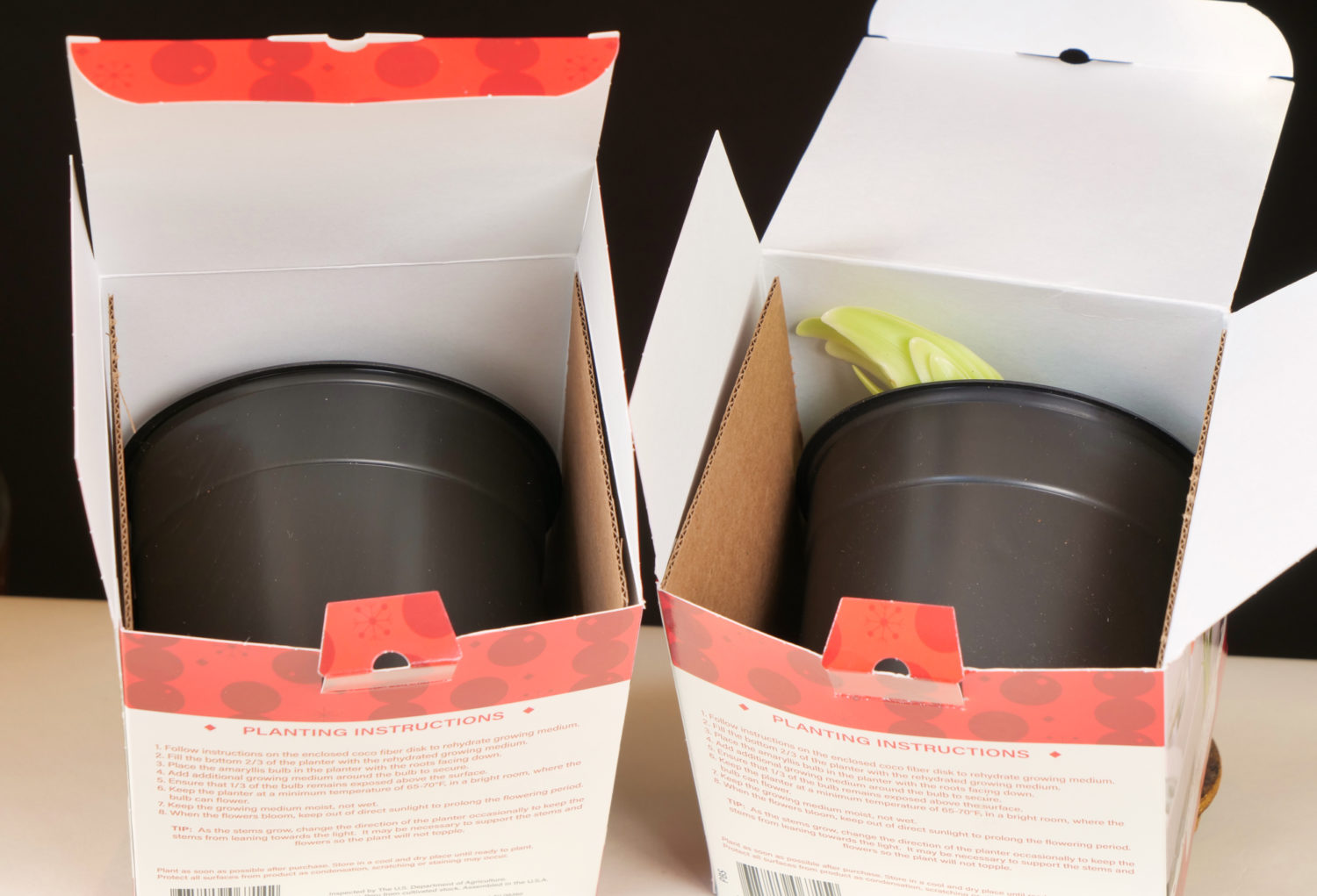
As it turns out, there is some thin corrugated cardboard on two sides to keep the pot tight. The thin, unlined card-stock of the box is no match for the hydraulic power of the sprouting bulb. We need to get these out fast!
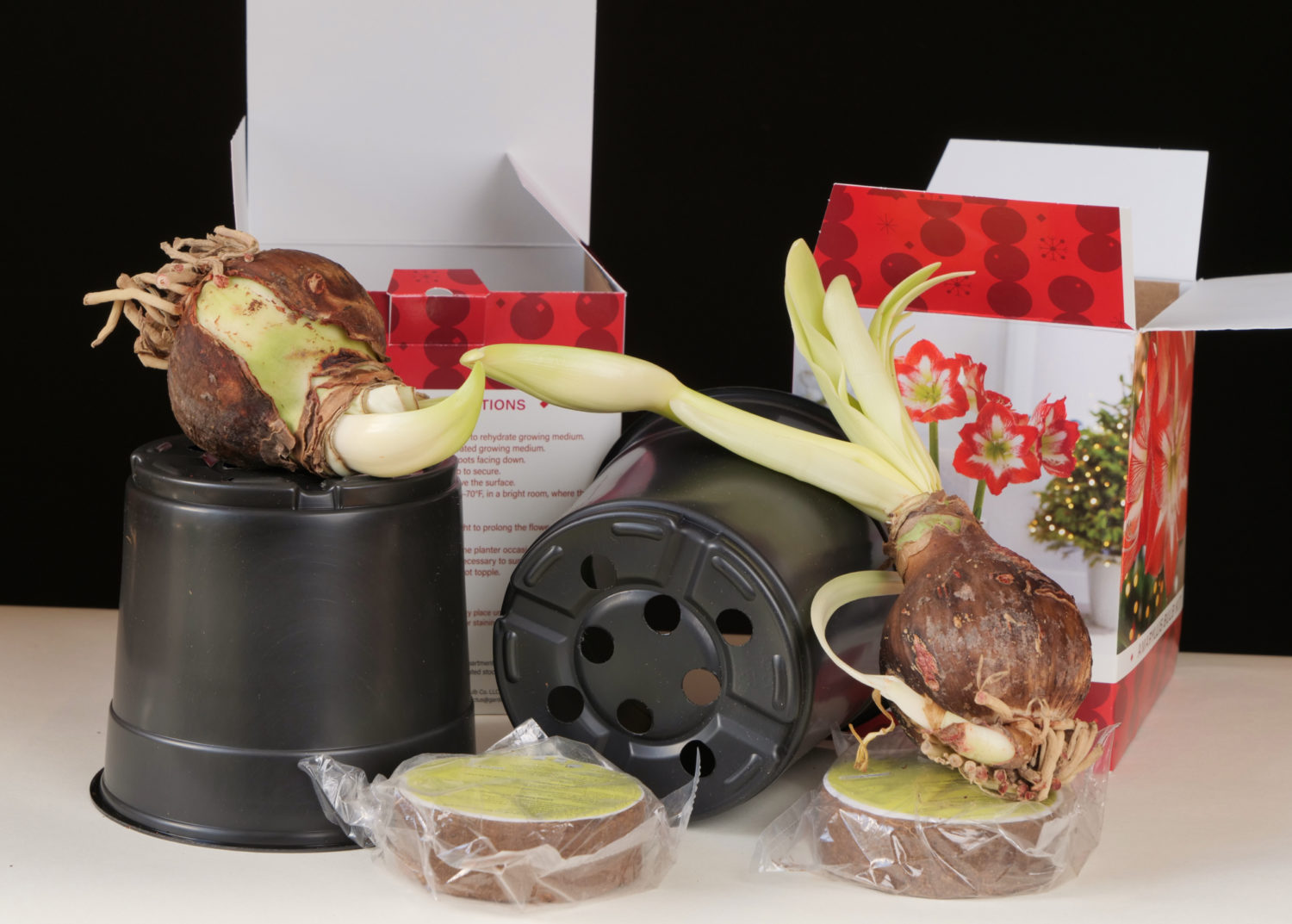
Before we discuss the obvious situation here, let’s go over the stats. Both kits have a disc of compressed coconut coir from Sri Lanka. Both have thin, 5.5″ (1.2 liter) black plastic pots made in the USA, with excellent provision for drainage. The nicely firm ‘Red Lion’ bulb on the left measures 23.5cm circumference, which is about average for these low cost kits. Its clipped roots are still mostly fleshy, so rooting should happen as the bulb grows, which could make for a nice second scape if it makes one. The sprouting is mostly limited to the bloom scape, which is slightly curved from close quarters, but it should straighten out without issues.
The ‘Minerva’ bulb gives us pause. We have leaves that are pale and slightly bent, but that scape…yikes! The bulb itself measures only 22cm, which is a borderline size if more than one scape is to be expected, 24 cm would be better. It is also notably softer than its counterpart on account of moisture leaving the bulb to pump out all of that growth. The roots are not great, with only a few fleshy nubs, and this bulb needs moisture uptake yesterday. The offset sprouting from the base is curious, these are usually removed before or during bulb curing. Will ‘Minerva’ pull off a good performance with all of these challenges?
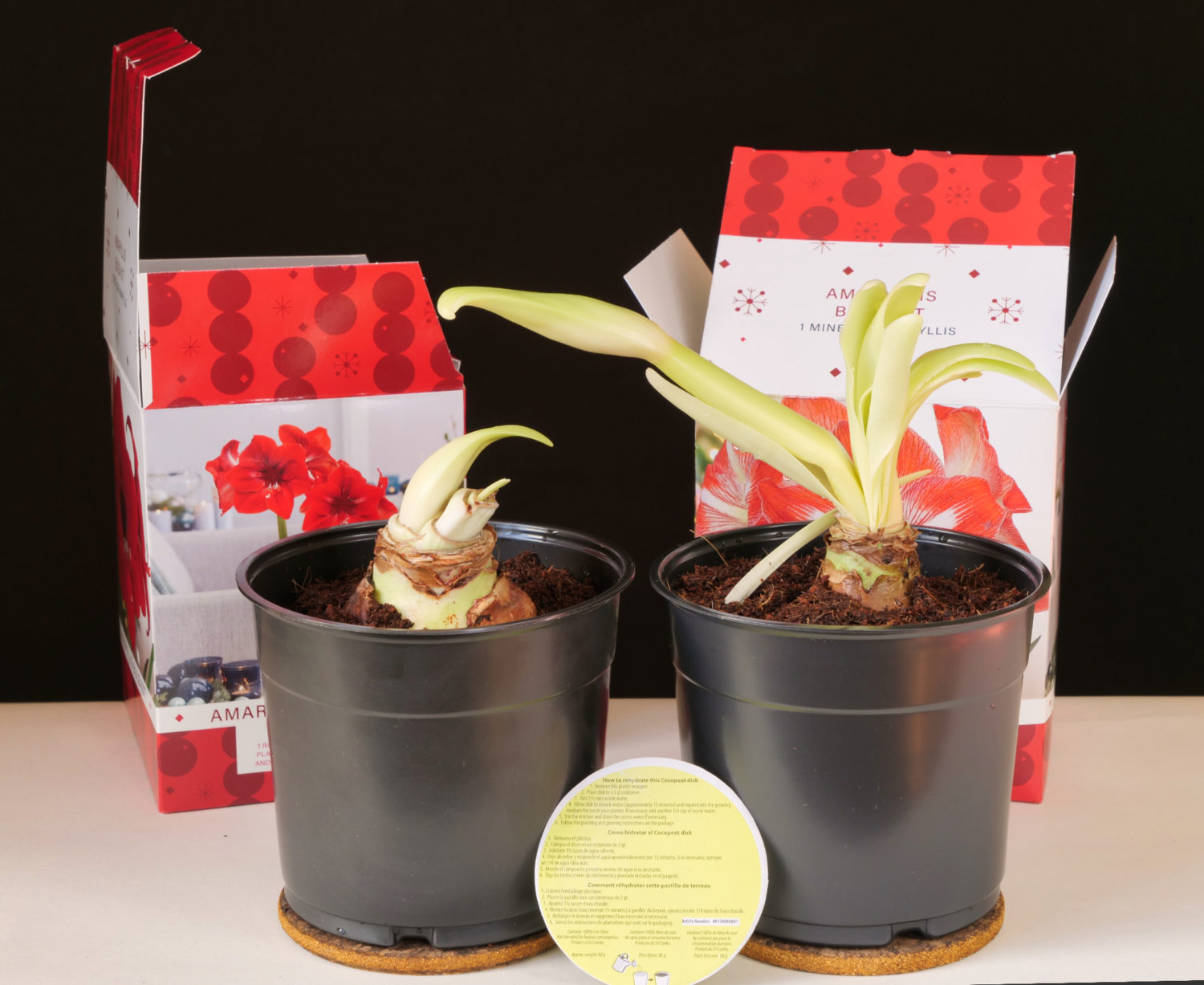
The race wasn’t even a race as it was clearly stilted in ‘Minerva’s’ favor assuming the damaged scape didn’t topple.
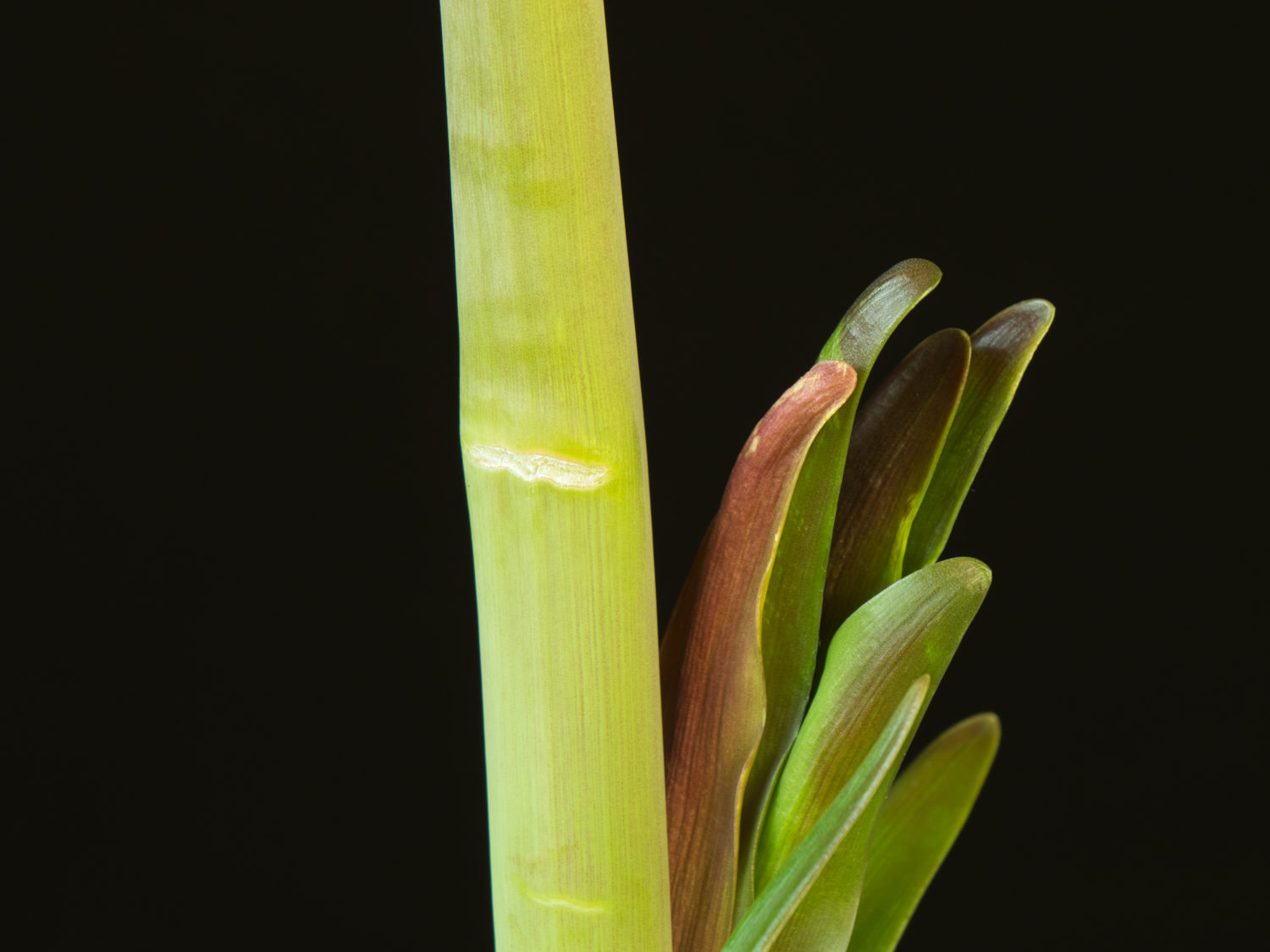
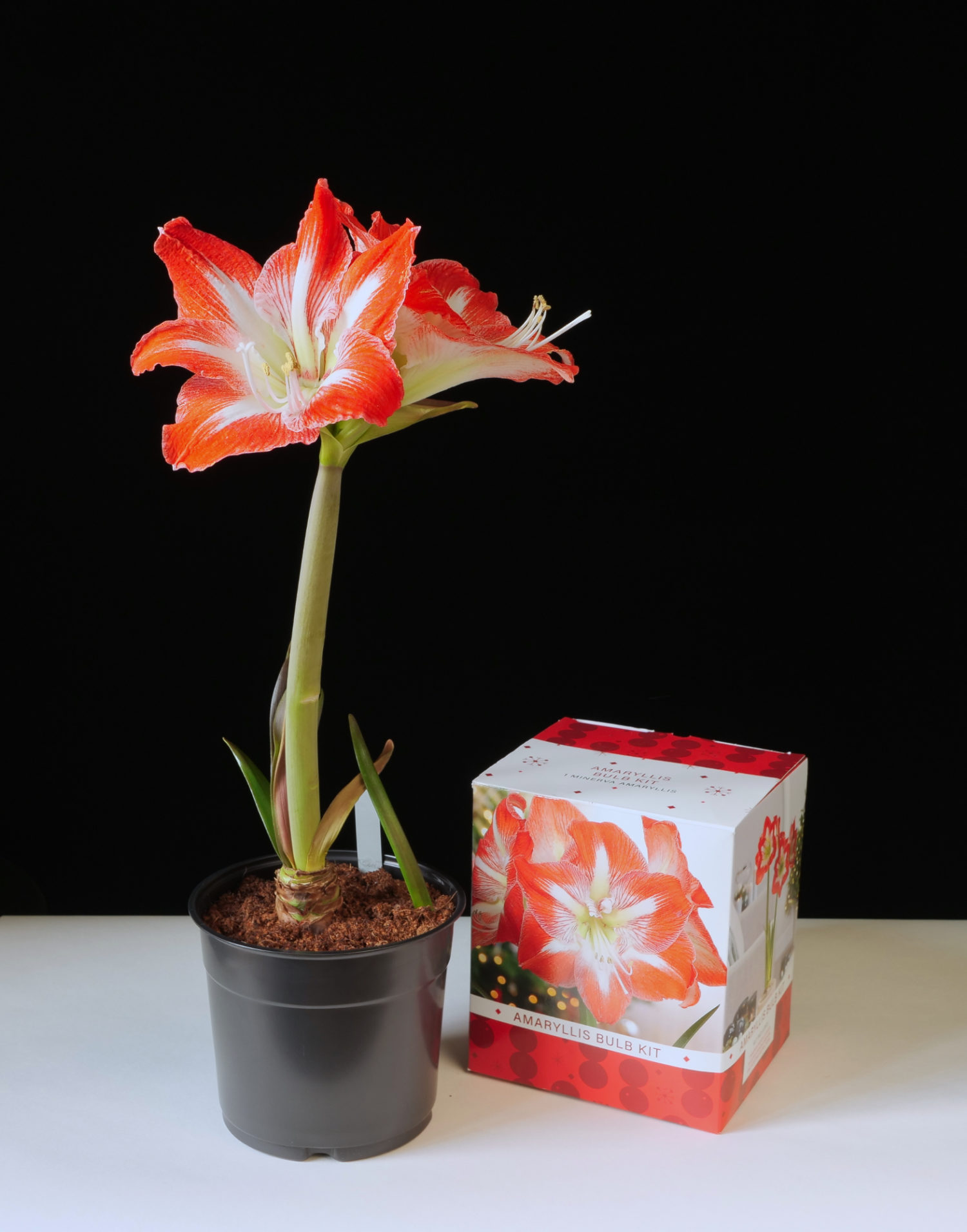
While ‘Minerva’ had withered away by December 24, ‘Red Lion’ was ready to show its Christmas spirit, in shades of rich red.
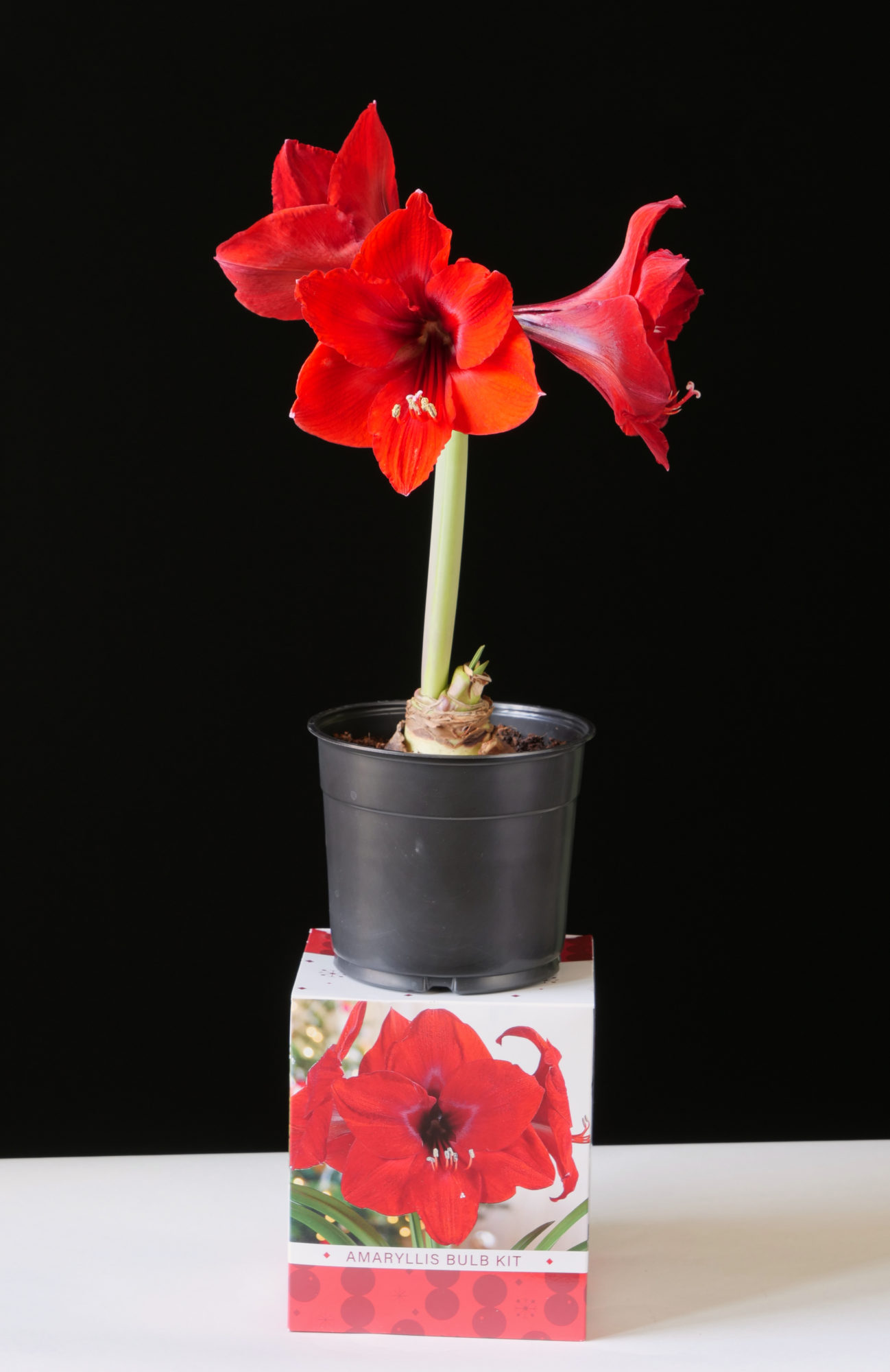
We can certainly give it to ‘Red Lion’ on the timing. The show itself? I hate to sound all Grinch-y and all, but it is lacking. The stubby scape bears only three undersize blooms…and the pollen is shedding prematurely. There is a very slowly developing second scape to give us hope for better performance later, a gift in itself I suppose. At least some holiday joy was provided right on time, so we’ll forgive the underwhelming performance, for now!
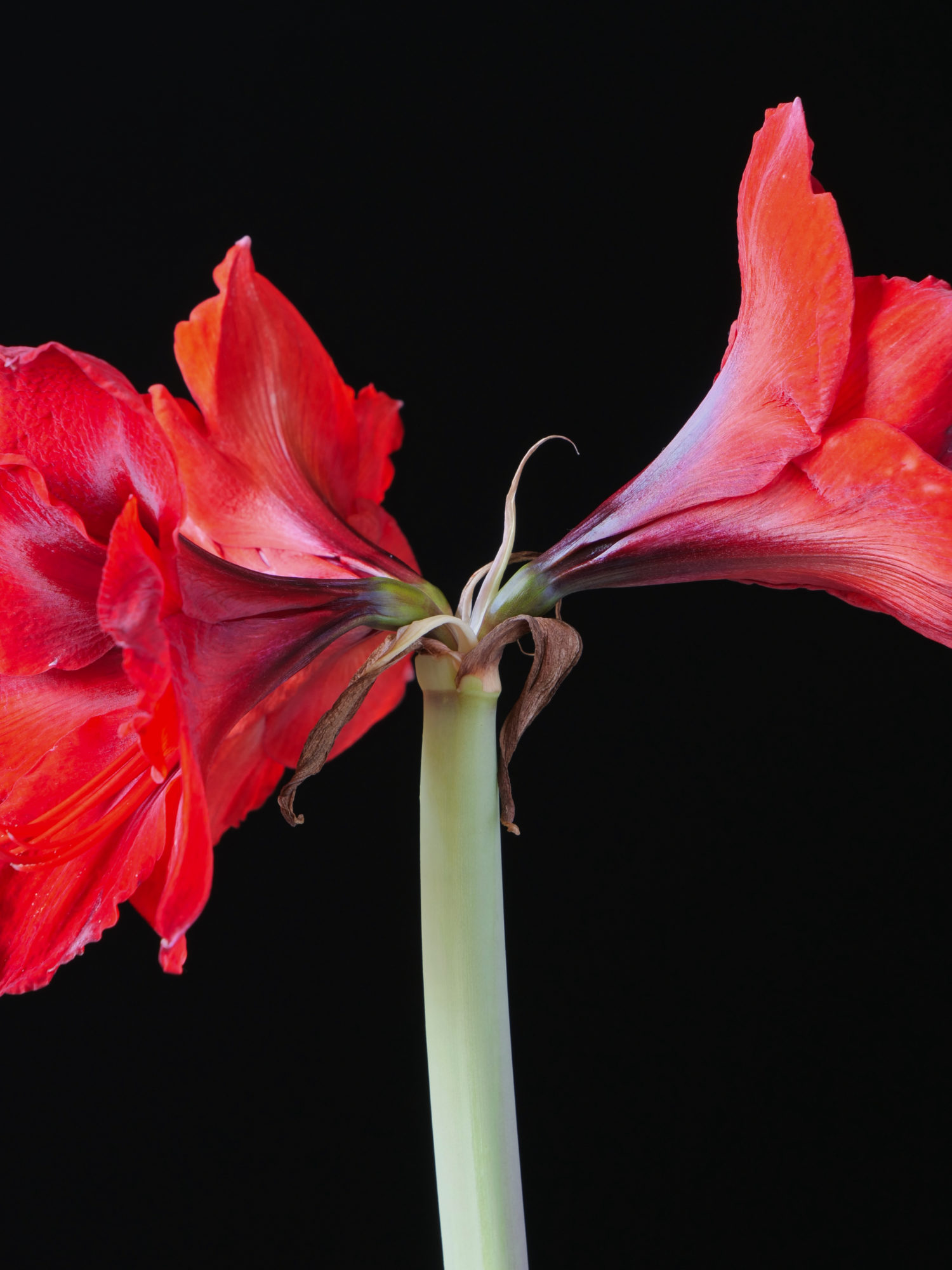
Well, the winter holidays have come and gone. Our last entry of the season decided to pose an effort to make amaryllis the romantic choice for Valentine’s Day. It’s not really working…maybe if this were a pink hybrid.
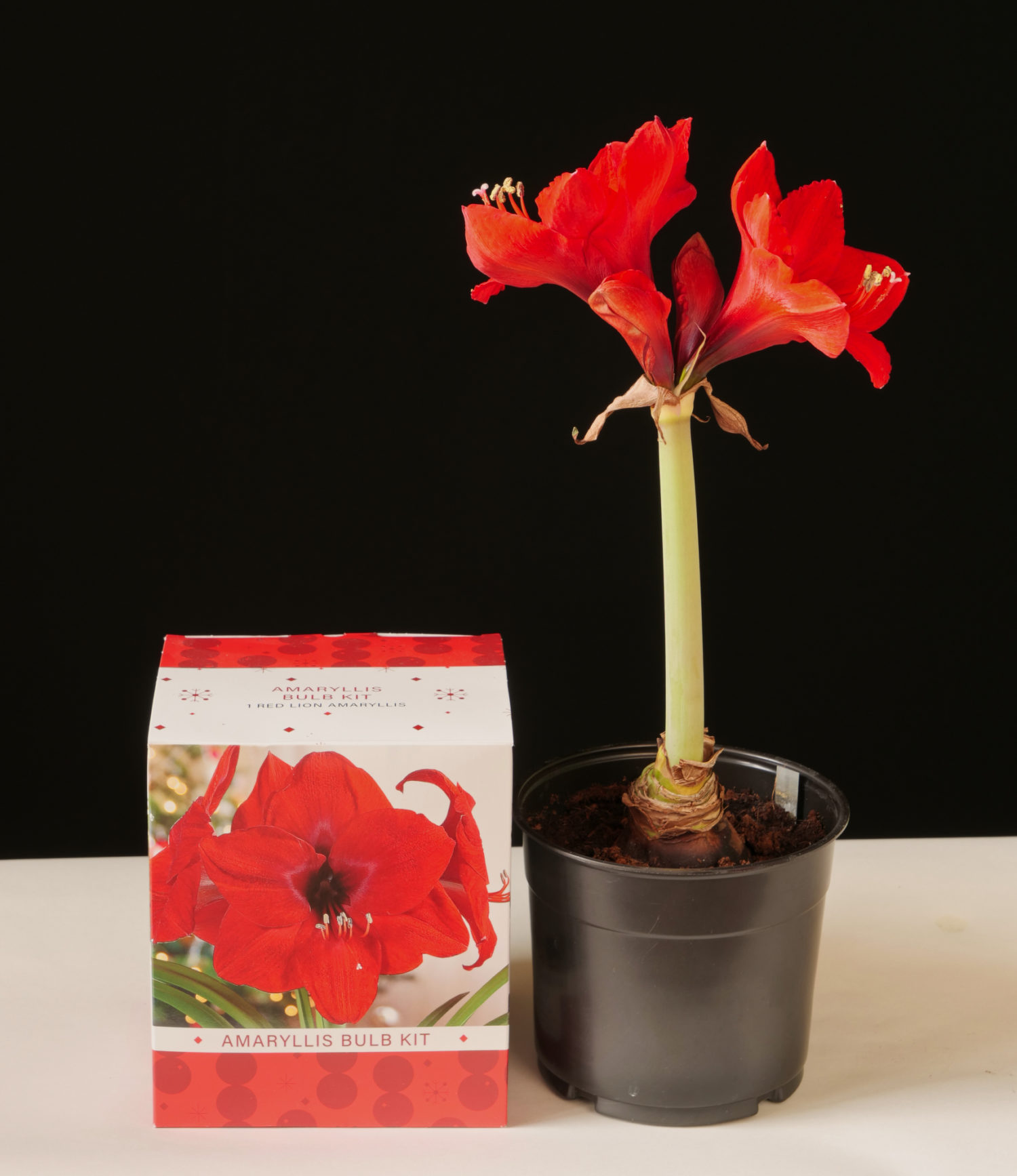
February is still a very busy month on the Emaryllis show bench, but mostly with carryover bulbs that were grown at home over last season. Amaryllis bulbs conditioned for Christmas sales should be done by now. Sometimes it is worth a very long wait for a second scape, but not in this case. The scape is short and stunted, the bulb still loose and wiggly in its media. One consolation…we did get four buds on this final scape. Perhaps a promise for next year.
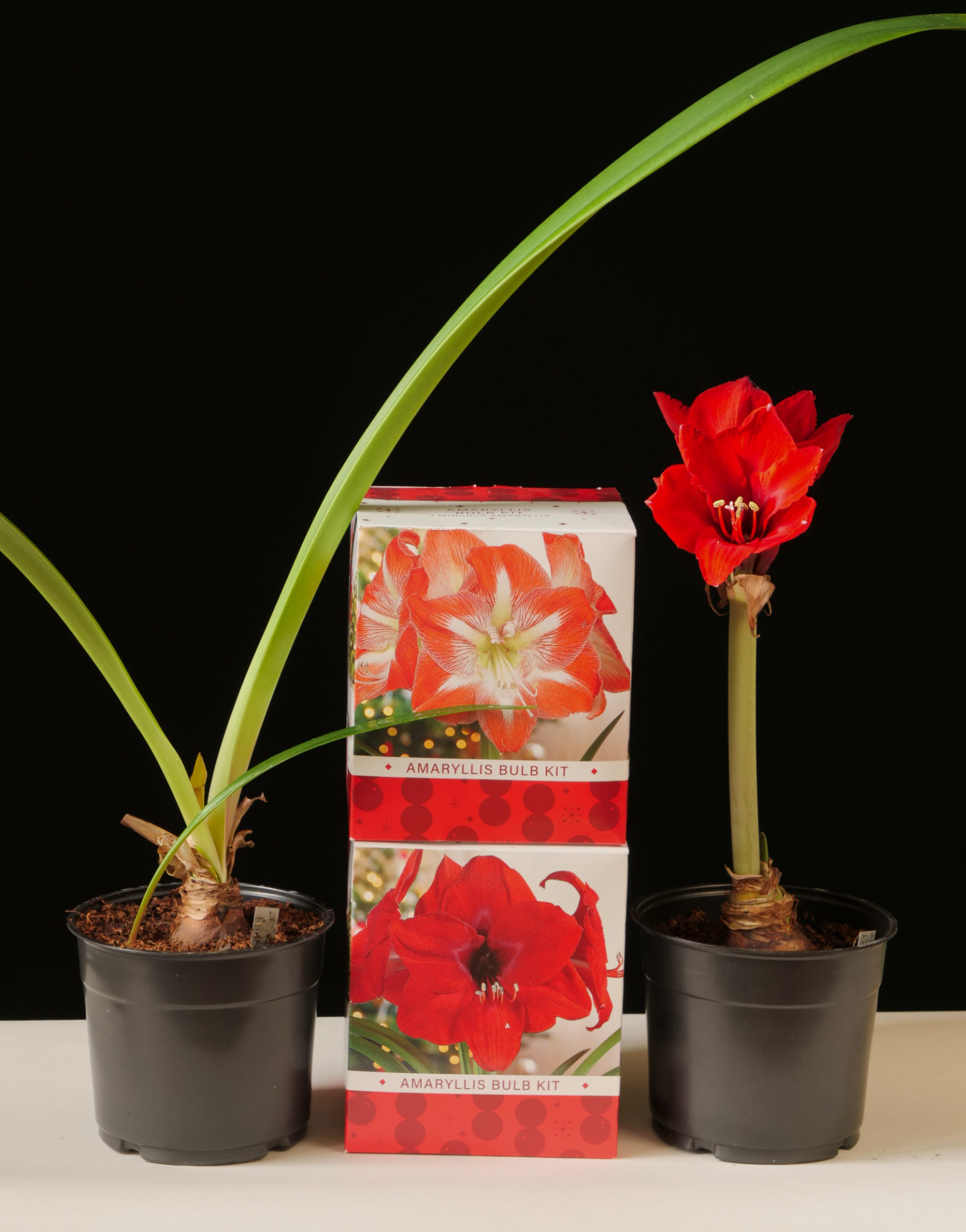
If there is any lesson to learn from buying inexpensive bulb kits for holiday blooms, it’s that there is no lesson to be learned. Even kits from the same company, using bulbs produced in the same country as previous seasons can yield dramatically better results. One key to upping the odds in your favor; buy them the first day you see them to give them the chance to be all that they can (and should) be.

No – the two cheapest were labelled as ‘from Holland’ but that could just be where the kits were made up, and not necessarily where the bulbs were from. No reference to origin at all on the slightly more expensive one – just the supermarket branding. (That one did come as a named variety, although I’ll be surprised if it is what it says on the box – I’m usually doing well if the flower colour matches the picture on the box, so it is a bit of a lucky dip!)
I’m ONLY buying super-cheap grocery store/supermarket kits now. Last year, I mail ordered 3 bulbs from a ‘specialist’ nursery at around £10 each (that’s around 13.50 in USD) because I didn’t think I could get any locally. One arrived so mushy with red blotch it was worthless, one grew & failed just before flowering and the other grew & failed just after – all had to get thrown out.
A few weeks later, my husband found some cheap kits at the supermarket (costing the equivalent of $3.50 USD). All three flowered really well and I’ve been able to grow them on for this year too.
So far, this year I’ve bought 3 box kits, (costing between $6.50 and $3.50 USD), all of which had MORE growing media than I needed, pots with drainage holes (and saucers), no sign of red blotch, no sign of starting into growth while in the box AND all with 2 inch long healthy roots. I’m never buying from a specialist nursery again!
It’s so wonderful that you are getting solid results from the cheapest kits! Do your cartons disclose the country of origin for the bulbs?